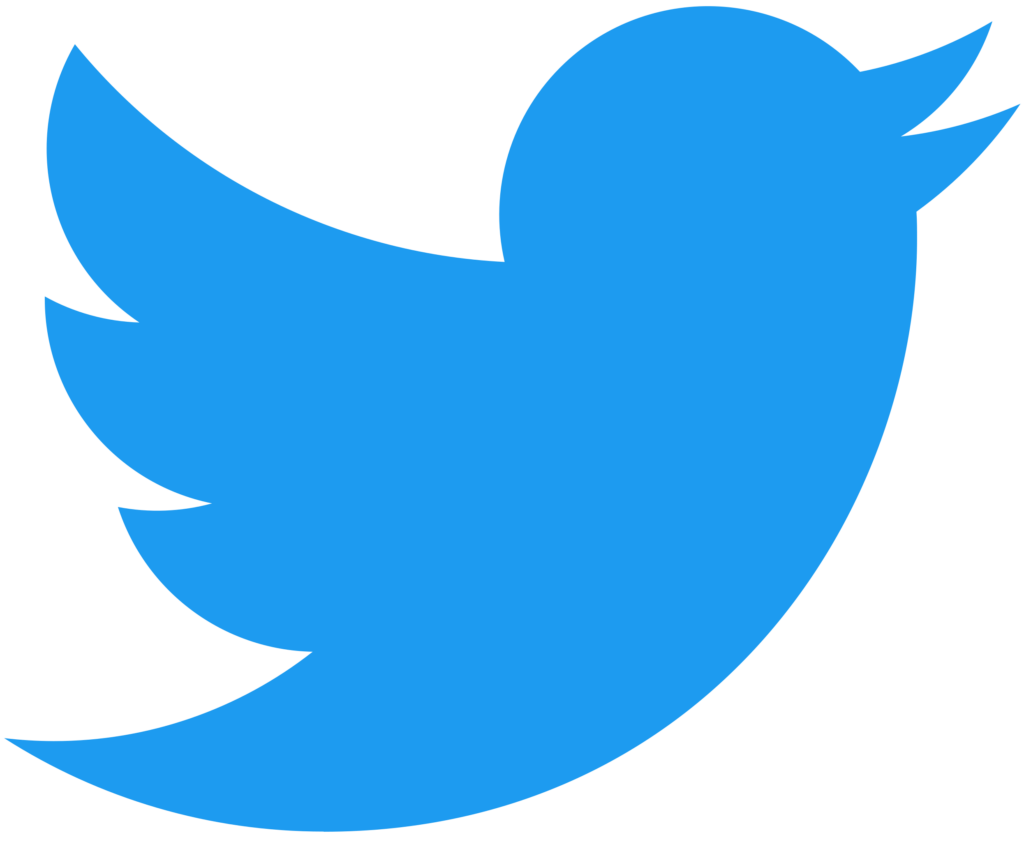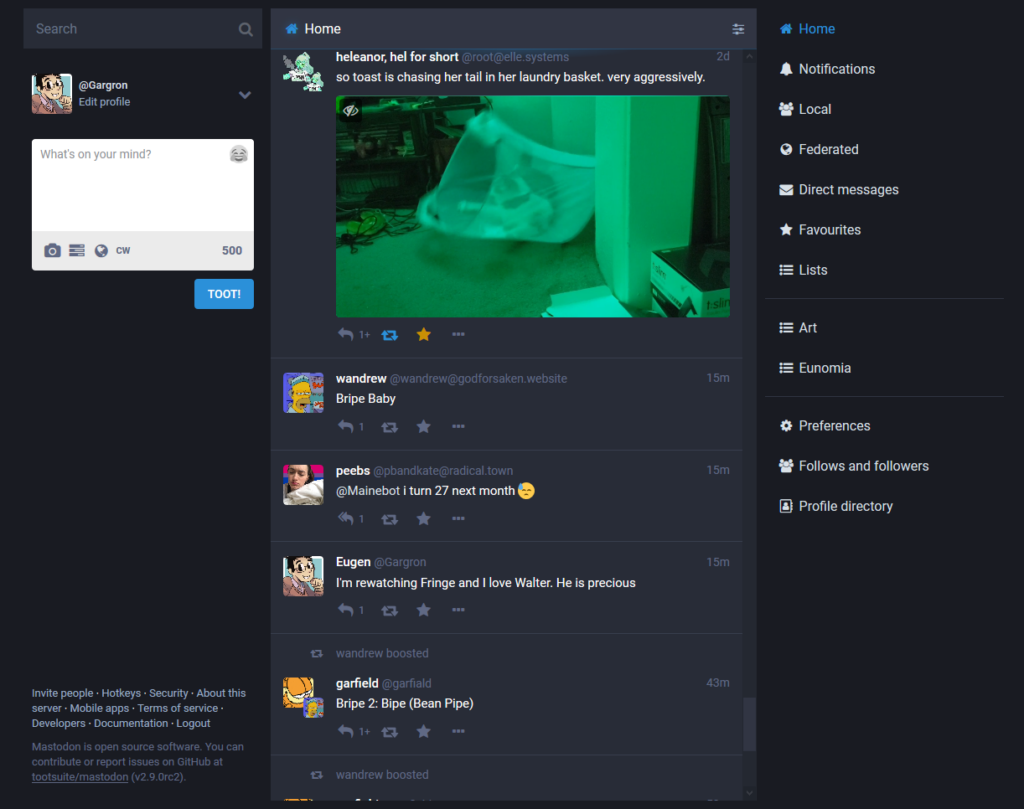Happy New Year! Several years ago, Leon Jackson wrote an article for Commonplace about the newspaper carrier’s New Year’s address, a tradition where carriers saluted their customers, recapped the year’s news, and then hit them up for money. In the spirit of those news carriers, we would like to thank you for your support and while we are not asking for you for any money, we are hoping that you might contribute to a discussion that we are having about how Commonplace should handle its social media presence moving forward this year.
Editor’s Note—Birds, Bots, and Elephants: Commonplace and Social Media
So, what is the right decision for Commonplace when it comes to choosing a social media strategy?
Before we get to the future, it might be helpful to look back at how Commonplace has attempted to engage its audience from the very beginning. In the last editor’s note, we examined how Commonplace has made numerous front-end and back-end changes over its more than twenty-year history to respond to technological developments as well as reader preferences. Part of that narrative highlighted several iterations of message boards (Republic of Letters and Common-place Coffeeshop) and blogs (Public Occurrences 2.0) that tried and failed to create an active conversation space in the early years of the publication. Eventually, the work of communicating directly to readers largely migrated to third-party social media platforms.
This movement followed the wide embrace of smartphones and a change in how internet users used their time online. In a recent article in The Atlantic entitled “The Age of Social Media is Ending,” Ian Bogost details a shift from social networking sites such as Friendster, Myspace, and others that focused on connecting users to one another to social media sites like Twitter that served more as a “channel through which to broadcast.” Some social networking sites like Facebook or Instagram straddled the social networking/media line by relying on connections but evolved to focus primarily as a method to distribute content.

Commonplace never had much luck creating our own network of users through message boards and blogs, but even if we had, there was a powerful pull toward privatized platforms in these years. Commonplace joined most of our peer publications in the social media universe with a Facebook account in 2011 and one on Twitter in 2012. For many years, we did not make full use of these accounts and only sporadically posted information about new issues and articles. On the eve of our 2019 relaunch as Commonplace.online, we had fewer than 1,900 followers on Twitter and under 500 on Facebook. The relaunch proceeded in two phases. First, we spent over a year bringing the entire back catalog to the new site while highlighting several articles and reviews through weekly themes. Next, in the fall of 2021, we began publishing brand new material with two to three articles a month making their debut. During both phases, we have used social media to announce new pieces and remind readers of previously published articles that they may have missed or forgotten about. While these posts do not often generate a lot of discussion, they have been successful in helping to drive readership to the site and a 50 percent jump in followers.

Of course, some of our outreach in recent years has come not through social media. We realized that many of our readers would not be Facebook or Twitter users, so Commonplace created a subscriber list in 2015 that has grown to over 4,500 members, more than all of our different social media followers combined. In the last few years, we have put that list to use and developed a monthly newsletter to highlight recent articles and tease upcoming publications. (If you are not already signed up, you should do so by submitting your email here).
That is not the end of the story, however. The choice for a publication like Commonplace to use third-party social media platforms like Facebook and Twitter means that we are implicitly supporting those companies and the decisions of their leadership team. In an era when the political statements and technological whims of Elon Musk and Mark Zuckerberg do not always align with our own, many of us are trying to figure out how to best use social media. How can we make use of these powerful tools in a way that satisfies our personal desires and professional goals, while not leaving a bad taste in our mouth because of the feeling that we compromised our ethical standards? You might still have a Facebook account to check in with some friends from high school and see pictures of their children heading off to their first day of a new school year, but have also stopped checking it too often because the posting about politics was distressing (especially coming from that old friend from sophomore English class). Maybe you are just hoping that Friendster comes back or that Tom finds a way to revamp Myspace.

This is not the first time that Commonplace confronted questions about our use of social media. A few years ago, we wrestled with how to handle the surge of Covid misinformation, troll farm posting about the Black Lives Matter protests, and a burgeoning Cambridge Analytica scandal related to Facebook. We followed the lead of one of our sponsors, the Omohundro Institute, as they reassessed their use of social media. The OI statement released at the time explained that “information integrity is at the heart of the Omohundro Institute’s mission. Sharing scholarship and the scholarly process with the public is so important to us because we know that understanding how we get to high quality scholarship is key to that integrity.” We wholeheartedly agreed and suspended new Facebook posting for Commonplace in June 2020.
With the recent ownership change at Twitter, we have been confronted by similar questions and have been discussing if another change is required. Whether it is the decision to re-platform white nationalist accounts or broadcast homophobic and antisemitic posts from the highest levels, the site has very quickly come to feel like a different social media space. Also contributing to my sense of unease is the chaos that the new ownership has manufactured by rapidly changing rules and policies. In just the time that I have been working on this piece, several high-profile journalists have had their Twitter accounts suspended for questionable reasons, which led to another call for people to leave the site and move to alternatives like Mastodon or Post.
The size of Twitter and its reach means that there is not necessarily an easy replacement right now for most people and organizations (if there was, I think a much greater number of people would have already left). The leading options right now seem to be Post, which is still in beta form and currently places prospective users on a waitlist, and Mastodon, a collection of independently run, federated social media servers called “instances.” For some users these sites are not as easy to navigate as Twitter and they may be unwilling to take the time to learn. Another question that users have been asking is if the audience on these sites will be as diverse as Twitter. Just a few weeks into the movement of people from Twitter to Mastodon, critics have questioned whether the site will host similar numbers of people of color and how those accounts will be treated. One recent and reassuring piece of news for history-minded social media users interested in Mastodon is the launch of an instance called historians.social by Karin Wulf, Joseph Adelman, and Liz Covart, current and former OI colleagues who clearly spell out their moderation philosophy in their code of conduct.

We have also been paying close attention to what other members of the early American history community have been doing and saying. A recent piece by historian Seth Cotlar (on Post) about why he was stepping back from Twitter and moving to Mastodon and Post at a time when he had over 55,000 followers noted that he has been thinking carefully about the relationship between the medium and the message and it became harder and harder to contribute his content to a medium that is controlled by someone enabling bad and dangerous behavior. This is a powerful argument for moving on from what sometimes seems like a toxic environment. Likewise, the Omohundro Institute recently set up a Mastodon account on the historians.social instance and will begin posting there moving forward. Maybe adding to our existing social media profile rather than entirely moving to another platform is a better option. We have a lot to consider as we figure out our own path.
So, what is the right decision for Commonplace when it comes to choosing a social media strategy? Should we stick with Twitter, move to a new site like Mastodon, or just expand our efforts and post on both platforms? Is it worth getting out of the social media game all together? A return to blogging? We would love to hear if our readers have any ideas or suggestions for a model of engagement that they would prefer. It is end of our New Year’s address about Commonplace and social media, so now we are asking you to contribute. Please let us know your thoughts by reaching out here.
This article originally appeared in January 2023.
Special thanks to Commonplace production editor Jordan Taylor for his insight and thoughts on this piece. His new book, Misinformation Nation: Foreign News and the Politics of Truth in Revolutionary America (2022) is a vital read on truth, politics, and the media.
Joshua R. Greenberg is the editor of Commonplace: The Journal of Early American Life. He is the author of Bank Notes and Shinplasters: The Rage for Paper Money in the Early Republic (2020) and Advocating the Man: Masculinity, Organized Labor, and the Household in New York, 1800-1840 (2008).




















